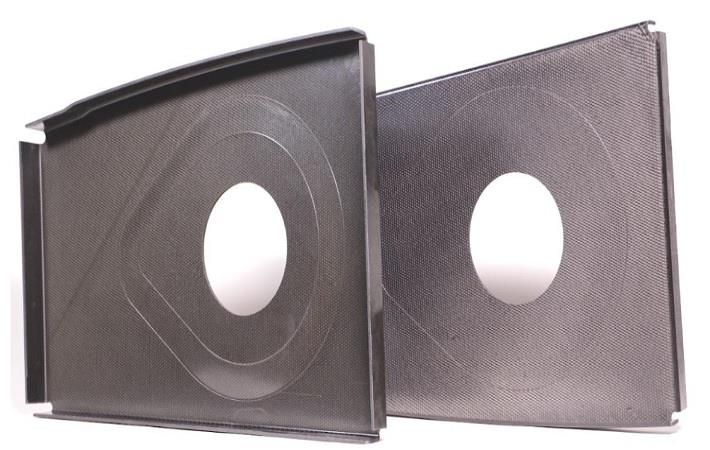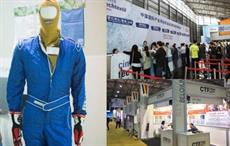Solvay and Boeing have produced a new generation of composites, Cycom EP2750, to accelerate the path towards lighter, less polluting aircraft. Composite materials come with a certain price, and making parts with them is a slow process. The new composites are fast and easy to work with. Use of composites currently results in fuel savings of 10 to 15 per cent.
The development of Cycom EP2750 is the result of a strong partnership between Solvay and Boeing. The two companies started working together over three years ago in order to better understand the aerospace industry’s needs in terms of high-rate, cost effective part manufacturing and the associated technical challenges, and to develop a material along with process solutions to meet these challenges, as well as demonstrate the obtained capabilities by manufacturing various representative parts. Cycom EP2750 is one of three finalists for the JEC World Innovation Awards in the Aerospace category.Solvay and Boeing have produced a new generation of composites, Cycom EP2750, to accelerate the path towards lighter, less polluting aircraft. Composite materials come with a certain price, and making parts with them is a slow process. The new composites are fast and easy to work with. Use of composites currently results in fuel savings of 10 to 15 per cent.#
So far, over 300 parts with five different designs have been made in a simulated production environment, demonstrating the short cycle times and high performance can effectively be attained. The two companies split the work - Boeing set the expectation for production rates (takt time, which is the average time between the start of production of one unit and the start of production of the next unit), material performance and provided part designs based on typical aerospace small parts, while Solvay developed the tooling requirements, prepreg material and manufacturing processes.
Now that this innovation is about to make composite parts cost competitive with metal for aircraft parts, manufacturers are set to convert more and more parts from metal to composites, passing the 50 per cent tipping point and thus further reducing emissions caused by airplanes. Lighter planes also mean more comfortable traveling for passengers: they don’t need to fly as high, so air pressurisation in the cabin is lower while humidity levels are higher, which reduces jetlag. The design freedom enabled by composites means more efforts can be placed in improving passenger comfort.
The main thing is the curing time it allows. Making a part with carbon fiber pre-impregnated with resin traditionally takes hours because of the required autoclave curing time. That is, it needs to be cooked in the oven for a long time. Cycom EP2750 reduces this time so significantly that manufacturing rates can be multiplied by a factor of 10 to 20.
This is also made possible by the product’s compatibility with the fastest processing technologies currently available for making composite parts - double diaphragm forming (DDF) and spring frame press fabrication. Robots can handle these parts easily, which, combined with the resin’s fast-curing properties, reduces cycle time from 8.5 hours to 30 minutes. As parts are made faster, asset utilisation is lower and throughput is higher; also, hot compression molding is more cost effective than autoclave manufacture, especially for smaller parts. Put together, these factors decisively reduce the overall cost per part, thereby making composites competitive with the traditionally employed machined aluminum. This is only valid for small to medium parts, but in conformity with aerospace standards for performance and quality, which means they can be used for primary as well as secondary structure, and complex geometries aren’t a problem either.
Cycom EP2750 targets all other areas of the aerospace industry requiring high-rate manufacturing of high numbers of parts, namely military aircraft, autonomous air vehicles such as drones – a rapidly expanding market – as well as the emerging field of urban air-taxis; for these vertical lift vehicles, high performance lightweight composites are definitely of interest.
In all these markets, current composite technologies are just too slow to keep up with rising manufacturing rates. This new material provides not only the necessary rapid manufacturing, but also the cost efficiency they seek in order to be competitive.
Airplanes need to get lighter. The aerospace industry is in search of any smart solution that can help it construct aircraft that consume less fuel and therefore emit less carbon dioxide in order to reduce its direct contribution to air transport’s carbon footprint – currently 2 per cent of global emissions. The most readily accessible of those solutions is to make planes out of composite materials instead of metal, a direction, manufacturers have been following for years, progressively replacing more and more metal parts with carbon fibre. In fact, certain commercial aircraft flying today nearly reach a proportion of 50 per cent of composites. The aerospace industry estimates that currently, the use of composites results in fuel savings of 10 to 15 per cent.
Fibre2Fashion News Desk (SV)


